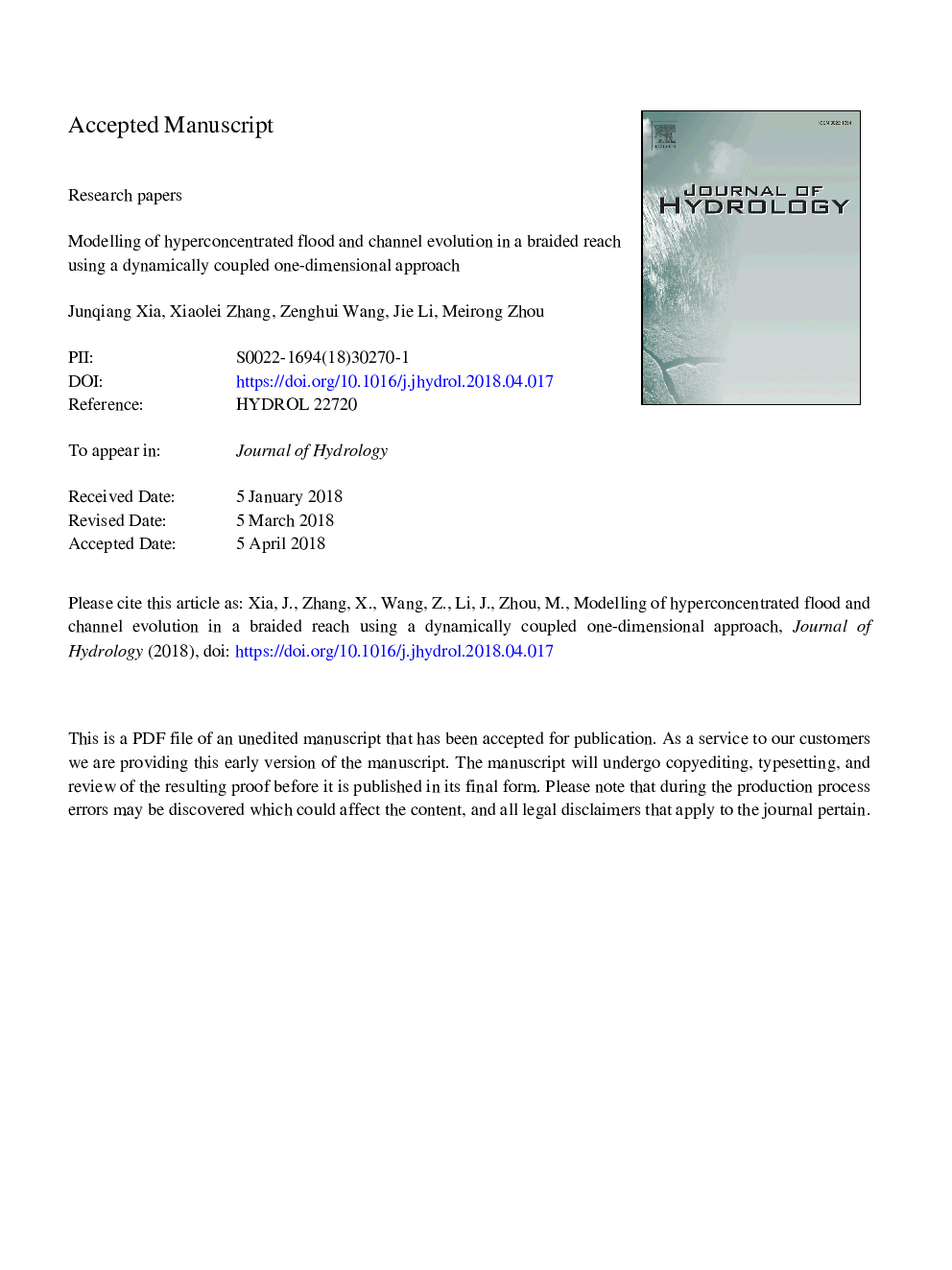| Article ID | Journal | Published Year | Pages | File Type |
|---|---|---|---|---|
| 8894839 | Journal of Hydrology | 2018 | 59 Pages |
Abstract
Hyperconcentrated sediment-laden floods often occur in a braided reach of the Lower Yellow River, usually leading to significant channel evolution. A one-dimensional (1D) morphodynamic model using a dynamically coupled solution approach is developed to simulate hyperconcentrated flood and channel evolution in the braided reach with an extremely irregular cross-sectional geometry. In the model, the improved equations for hydrodynamics account for the effects of sediment concentration and bed evolution, which are coupled with the equations of non-equilibrium sediment transport and bed evolution. The model was validated using measurements from the 1977 and 2004 hyperconcentrated floods. Furthermore, the effects were investigated of different cross-sectional spacings and allocation modes of channel deformation area on the model results. It was found that a suitable cross-sectional distance of less than 3â¯km should be adopted when simulating hyperconcentrated floods, and the results using the uniform allocation mode can agree better with measurements than other two allocation modes.
Keywords
Related Topics
Physical Sciences and Engineering
Earth and Planetary Sciences
Earth-Surface Processes
Authors
Junqiang Xia, Xiaolei Zhang, Zenghui Wang, Jie Li, Meirong Zhou,
